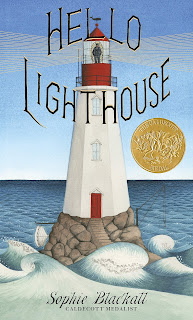Welcome to my blog! Here is a running list of every book I have reviewed so far, including the audience levels. You can find the actual reviews by clicking on the labels listed above (Pre-K-6th grade and 7th-12th grade).
1. BIG by Vashti Harrison (Pre-K - 6th Grade)
2. Alone by Megan E. Freeman (Pre-K - 6th Grade)
3. Legends of Lotus Island: The Guardian Test by Christina Soontornvat (Pre-K - 6th Grade)
4. Where is Walt Disney World? by Joan Holub (Pre-K - 6th Grade)
5. New Kid by Jerry Craft (Pre-K - 6th Grade)
6. Thunder and the Noise Storms by Jeffrey Ansloos, Shezza Ansloos, and Joshua Mangeshig Pawis-Steckley (Pre-K - 6th Grade)
7. Dreamers by Yuyi Morales (Pre-K - 6th Grade)
8. Dogtown by Katherine Applegate and Gennifer Choldenko
9. Hello Lighthouse by Sophie Blackall
10. Invisible by Christina Diaz Gonzales
11. The Poet X by Elizabeth Acevedo (7th - 12th Grade)
12. The Girl from the Sea by Molly Knox Ostertag (7th - 12th Grade)
13. Hey, Kiddo by Jarrett J. Krosoczka (7th - 12th Grade)
14. Strange the Dreamer by Laini Taylor (7th - 12th Grade)
15. Long Way Down by Jason Reynolds (7th - 12th Grade)
















